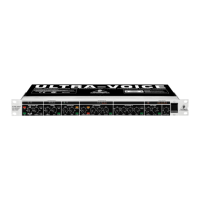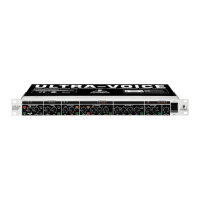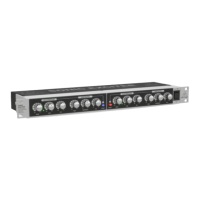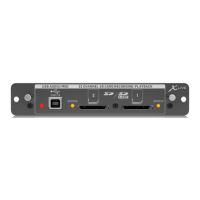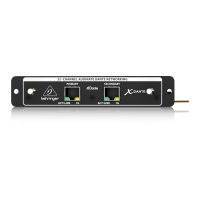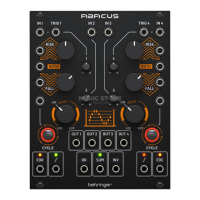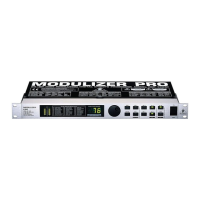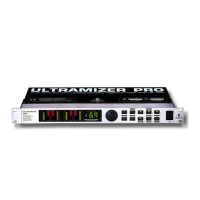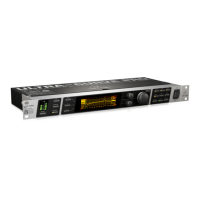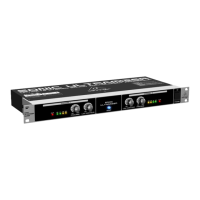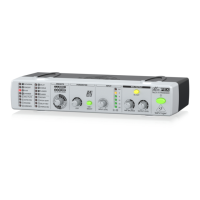14
Tremolo & Delay: Since trip hop has become trendy, this effect originally found in guitar amps
is used to produce a more or less fast and intensive variation of volume (with an additional panorama
effect included in the DSP1000P). The modulation speed is controlled with VARIATION, the intensity
with EDITA, and the panning rhythm with EDITB. This algorithm belongs to the group of multi-effects
programs and also includes a delay effect which can be adjusted with EDITA-ENG.R (= delay time
from 0 to 340 ms in steps of 5.4 ms) and EDITB-ENG.R (= feedback).
1.4.4 Effect algorithm combinations (multi-effects programs)
Effect algorithms nos. 20 through 24 are multi-effects algorithms combining various effect types with, for
instance, a reverb algorithm, and can hence be used simultaneously. For example, effect #24 allows you to
chorus a lead guitar sound and at the same time add some room reverb.
Tremolo & Delay: This effect was originally meant for guitar but has become very popular with the
emergence of trip-hop. A variable, both in intensity and speed, variation of the volume, with additionally
a panning effect. Determine the speed of the modulation you with VARIATION, the intensity with
EDITA-ENGINEL and the Panning speed with EDITB-ENGINEL. This algorithm belongs to the
group of the multi-effect programs and is combined with a delay. Delay time is set with EDITA-ENGINER
ranging from 0 to 630 ms (10 ms increments) feedback is set with EDITB-ENGINER.
Delay & Reverb: Probably the most popular combination used for vocals, solo guitars, etc. With
ENGINEL you can adjust delay time (EDITA-ENGINEL) and feedback (EDITB-ENGINEL).
EDITA-ENGINER controls decay time and EDITB-ENGINER reverb mix. The program uses a Bright
Room reverb which can be used for a variety of applications. VARIATION changes the Delay Mix.
Pitch & Reverb: Use ENGINEL to transpose the pitch shifter (EDITA = cents; EDITB = semi-tones),
and ENGINER to control the reverb (Bright Room).
Flanger & Reverb: The flanger can be controlled in its modulation depth (ENG.LEDITA) and feed-
back (ENG.LEDITB), the reverb in its decay time (ENG.REDITA) and mix amount (ENG.R
EDITB). You can also adjust the modulation frequency with the VARIATION parameter.
Chorus & Reverb: This algorithm combines the popular chorus effect. Controllable parameters: modu-
lation frequency (VARIATION), modulation delay (ENG.LEDITA) and depth (ENG.LEDITB) with
the reverb from programs nos. 21-23.
1.4.5 Dual-mode effects algorithms
Unlike multi-effects programs, dual-mode programs (nos. 25 through 32) have their effects split up and sent
separately to the two audio channels (left/right). For example, you can route a flanger to the VIRTUALIZERPROs
left channel, while using a reverb (effect #26) for the right channel. In this way, you can use the DSP1000Ps
dual-engine processor as if it were two separate mono effects devices.
Pitch/Reverb: Here, you have a pitch shifter in the left channel (= Engine) with the usual edit options,
and a reverb in the right channel, which can be controlled in its length (EDITA) and high-frequency
content (EDITB).
Flanger/Reverb: left channel = flanger, modulation speed is controlled by VARIATION, delay by
ENG.L-EDITA and depth by ENG.L-EDITB. Right channel = reverb, with reverb time controlled by
ENG.R-EDITA and brilliance with ENG.R-EDITB.
Chorus/Reverb: Left channel = chorus, modulation speed is controlled by VARIATION, delay by
ENG.L-EDITA and feedback by ENG.L-EDITB. Right channel = reverb, with reverb time controlled
by ENG.R-EDITA and brilliance with ENG.R-EDITB.
Tremolo/Reverb: Left channel = tremolo, modulation speed is controlled by VARIATION, delay by
ENG.L-EDITA and feedback by ENG.L-EDITB. Right channel = reverb, with reverb time controlled
by ENG.R-EDITA and brilliance with ENG.R-EDITB.
1. INTRODUCTION
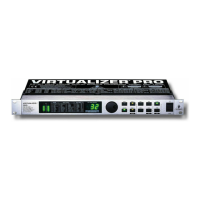
